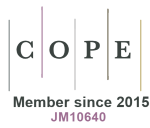Downloads
How to Cite
Frandsen, A. S., Fabisiewicz, A., Jagiello-Gruszfeld, A., Haugaard, A. S., Petersen, L. M., Albrektsen, K. B., Nejlund, S., Smith, J., Stender, H., Hillig, T., & Sölétormos, G. (2015). Retracing Circulating Tumour Cells for Biomarker Characterization after Enumeration. Journal of Circulating Biomarkers, 4(1). https://doi.org/10.33393/jcb.2015.2055
Issue
Section
Original research article
Statistics
- Abstract views - 675 times
- PDF downloads - 415 times
Sign up
banners150
Most popular articles in the last 30 days
-
239
-
208
-
177
-
153
-
114









